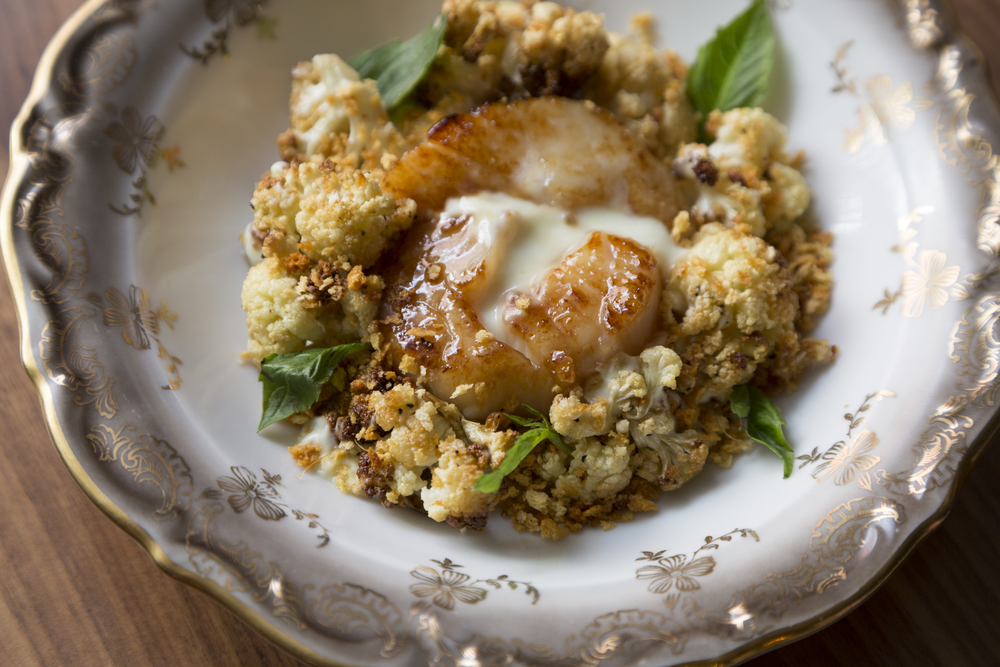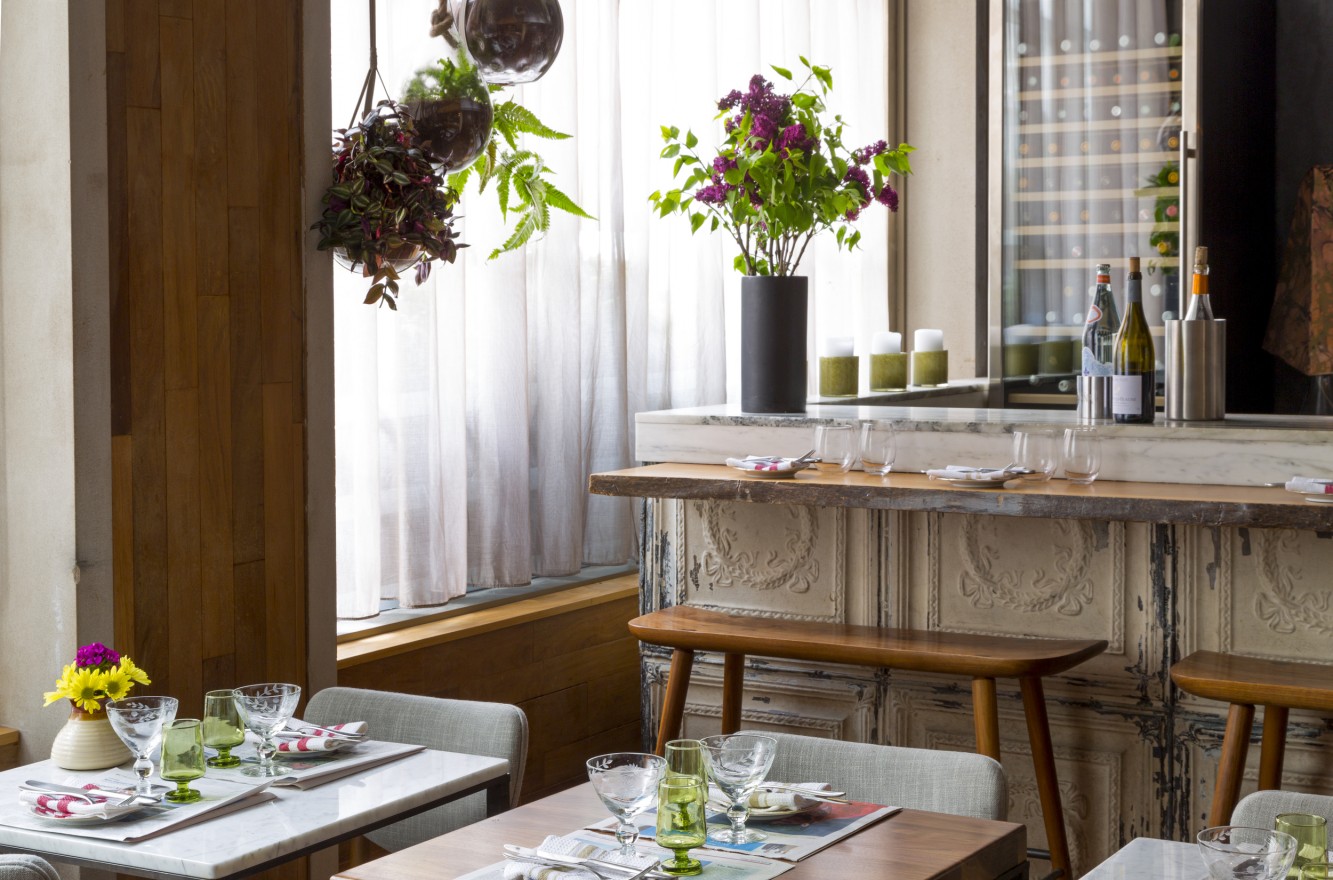
Jehangir Mehta proves sustainable dining can be chic in the heart of Manhattan by pioneering zero waste restaurant practices and sustainable sourcing. (Photos courtesy of Graffiti Earth)

Jehangir Mehta proves sustainable dining can be chic in the heart of Manhattan by pioneering zero waste restaurant practices and sustainable sourcing. (Photos courtesy of Graffiti Earth)
There’s nothing more joyous than enjoying a delicious meal at one of your favorite restaurants. But when your stomach is full and there’s bread left in your basket and a half-eaten entree on your plate, what do you do with it? While some people opt to take home their leftovers, often times they end up in the trash. And that’s a problem.
According to the USDA, roughly 30-40% of the food produced in the United States goes to waste. In addition to manufacturing waste, and about 31% of the total food loss occurs in the hands of retailers and consumers. This includes food wasted in grocery stores, at home, and in restaurants.
Achieving low or no waste is a challenge for restaurants. Even if a restaurant sources local and sustainable ingredients, a great deal of waste occurs at the front end of the house. Often, consumers order large quantities of food and don’t finish them. Moreover, diners expect aesthetically pleasing and large portioned meals, as well as consistency in taste, texture, and appearance for every dining experience, adding additional challenges to reducing waste in restaurant settings.
Thankfully, some chefs are stepping up to the plate when it comes to sustainable dining. Chef Jehangir Mehta is a former runner-up on Food Network’s Next Iron Chef and a zero waste restaurant pioneer. His widely-acclaimed restaurant, Graffiti Earth, is nestled in the heart of Tribeca, Manhattan, where diners enjoy creative, sustainably-sourced meals in an enchanting atmosphere.
I had the pleasure of speaking to Chef Jehangir Mehta and learning more about the initiatives he has taken to commit to sustainable dining, and quickly learned that every detail of his restaurant, from the burger recipe to the dining placemats, is a result of thoughtful eco-minded decision making.
The eclectic menu at Graffiti Earth is filled with enticing plant-forward dishes, like Zucchini Hummus Pizza, Garlic Coconut Soup with Chickpea Caviar, and Scallop Brulee with Cauliflower Wasabi Yogurt.
While the menu may read as an ordinary upscale New York restaurant, a closer look reveals a carefully crafted and creative collection of sustainable dishes.
Chef Mehta consciously seeks out produce that may go unloved in other eateries, looking past aesthetic misshapes by sourcing unusable produce scraps from vendors who consider awkwardly shaped fruits and vegetables unuseable, and from other chefs who cannot use fruits or vegetables in their entirety.
The otherwise neglected produce gets put to use in soups and entrees on the menu, which is vegetable-focused, with animal proteins served on the side as a nod to sustainability.
When it comes to the meats and seafood that do appear on the menu, Chef Mehta seeks underutilized seafood that often goes to waste, and is careful to insure that all seafood served has been sourced in a manner that does not disrupt oceanic health.
The scallop brulee, for example, is crafted from broken scallops, given new life in an upscale entree. Without careful cooking techniques and an open mind, these scallops likely would have gone to waste. Even the burger on Graffiti Earth’s menu is made up of more mushrooms than beef, demonstrating an inventive way to stretch a carbon-costly food item with one that’s more climate friendly.

The coconut-based soup is ever-changing; it’s a creation based on whatever vegetable scraps are currently available, proving that good food doesn’t have to be consistent – it just has to be delicious.
Graffiti Earth also sources used espresso grounds from Birch coffee and uses them to give a distinct espresso flavor to ice cream in the restaurant’s Persian Toast, Butterscotch & Irish Coffee Cream dessert dish.
Many of the dishes served at Graffiti Earth are made from ingredients that would be turned down by other chefs. But with proper care and preparation, one chef’s trash becomes another chef’s treasure, delighting diners and the planet alike.
Dinnerware and utensils vary between place setting, and showcase a collection of gifts and hand-me-downs sourced from friends and family. Meals are served on recycled newspaper rather than disposable tablecloths, offering diners a recyclable dining surface and a memorable eating experience.

Graffiti Earth is a not only a great place to eat, it’s delicious proof that sustainable eating doesn’t have to be defined by strict dietary labels or new technology. It can be defined by create compassion, a little planning, and a lot of imagination.
Chef Jehangir Mehta proves that effective change doesn’t have to happen over night. Incremental changes over time can add up to a monumental impact. His steady approach to sustainability offers inspiration to those intimidated by large lifestyle changes. Or at the very least, an eating establishment to enjoy an eco-friendly meal.
